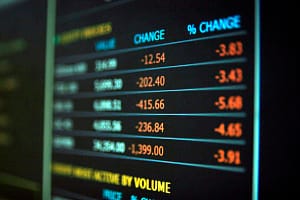Gold (XAU/USD) continued its upward trend during Friday’s trading, currently trading at $1990 per ounce, up by 0.06% for the day.
The current rise in gold prices is supported by the decline in U.S. Treasury yields and the stability of the U.S. Dollar Index (DXY) around 104.40 points.
Presently, U.S. 10-year Treasury yields have dropped to 4.44%. Market pricing of U.S. economic data has raised expectations of the Federal Reserve ending its monetary tightening cycle, and there is also optimism about a potential interest rate cut in mid-2024. These factors, in my view, are exerting some selling pressure on the U.S. dollar and reinforcing the increase in gold prices.
This week, initial weekly jobless claims in the United States rose to 231,000, the highest level in nearly three months. Meanwhile, continuous jobless claims reached their highest level since 2022, rising to 1.865 million from the previous reading of 1.883 million.
Additionally, U.S. industrial production decreased by 0.6% every month in October, compared to a 0.1% increase in the previous month, falling below market expectations.
Despite the agreement between U.S. President Joe Biden and Chinese President Xi Jinping to restore military relations and cooperation, I believe that ongoing tensions between the United States and China, the world’s two largest economies, may continue to sporadically boost gold prices in the short and medium term.
Today, the markets are awaiting the release of U.S. building permits and housing starts data, with expectations of a decrease in housing starting from 1.358 million to 1.35 million and a decline in building permits from 1.471 million to 1.45 million.
This presents a new opportunity for trading the rise in gold prices, but caution is advised due to recent conflicting data, which increases the likelihood of surprises in economic data figures.
The recent encouraging consumer price index (CPI) and producer price index (PPI) for October have strengthened the view that the Federal Reserve’s tightening cycle has ended, and the next step will be a reduction in interest rates. This has significantly impacted expectations for U.S. bond yields, reaching their lowest levels since late September.
Considering the history of previous crises, I think this represents the second wave of sharp declines in economic indicators and yields during the current inflation crisis cycle.
Typically, in the third wave, inflation rises strongly, causing bond yields and the dollar to increase, leading to a sharp market downturn and subsequent recession. This is what I am currently warning against.
If the market sentiment turns pessimistic regarding the Federal Open Market Committee’s monetary policy outlook after the current optimism, gold prices may remain on an upward trajectory in the short term.
This is especially likely if the U.S. Dollar Index continues its recent downward correction and solidly breaches below 103.40 points, which is currently a weak possibility. This scenario may only unfold if inflation figures indicate further economic weakness in the medium and long term, as a deteriorating overall economy could accelerate the Federal Reserve’s policy shift.





Leave a Comment